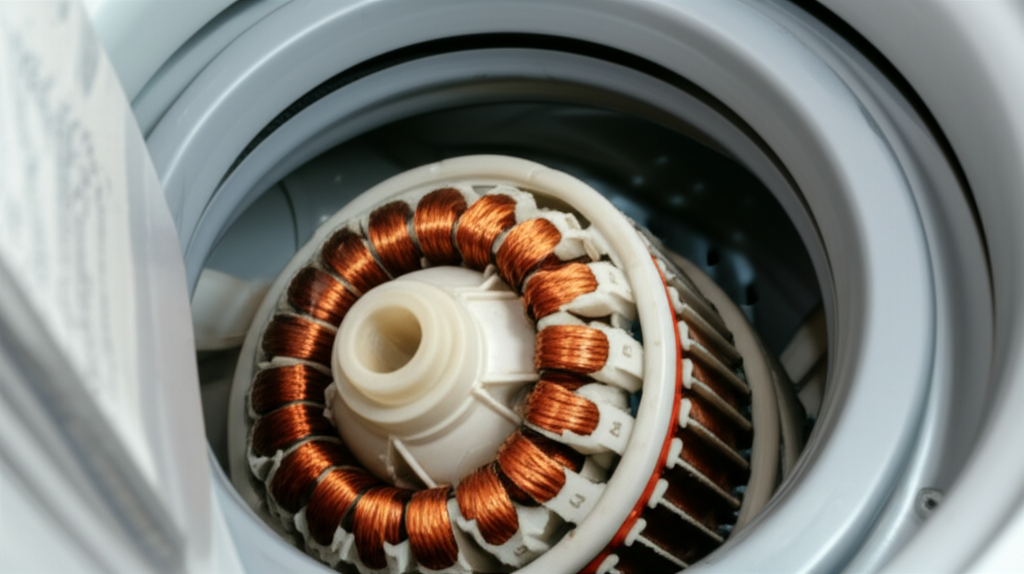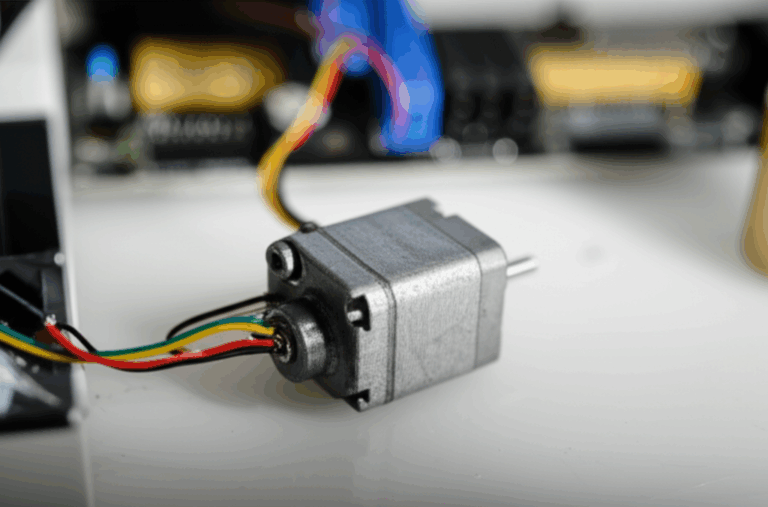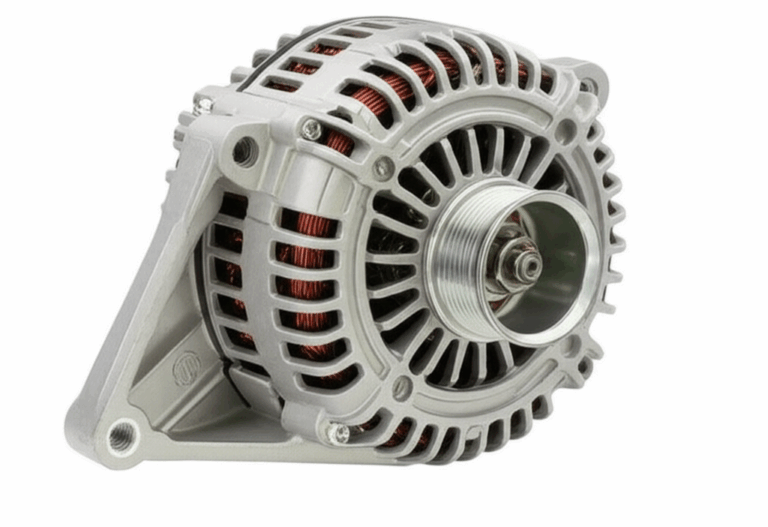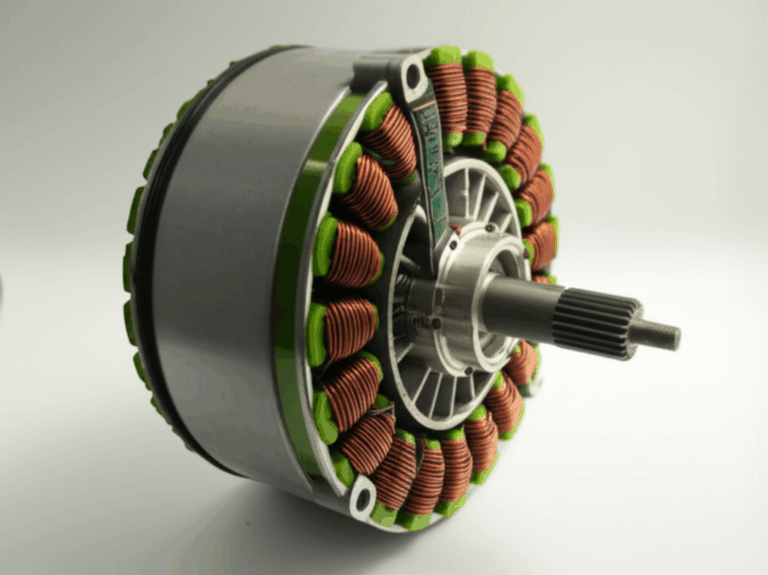
What Does a Stator Do on a Washing Machine? Unraveling Its Core Function
Table of Contents
- The short story of how I learned to respect the stator
- The heart of the direct drive motor: understanding the stator
- What is a stator
- Direct drive vs belt drive in plain English
- Key components that work with the stator
- How a washing machine stator works: the power of electromagnetism
- The principle of operation
- How the magnetic field creates motion
- Agitation vs spin cycle control
- Stator vs rotor: a dynamic duo
- Why the stator is crucial for performance
- Efficient and quiet operation
- Reliability and longevity
- Precise control through modern electronics
- Materials matter: laminations and efficiency
- Common symptoms of a failing washing machine stator
- No spin or no agitation
- Unusual noises and strong smells
- Error codes that point to motor issues
- Intermittent operation and vibration
- Other problems that mimic stator failure
- Troubleshooting and repair: what to do when your stator fails
- Safe diagnosis steps you can do at home
- How I test a stator with a multimeter
- Hall sensor and MCU checks
- DIY vs professional repair
- Cost of stator replacement and what affects it
- High level stator replacement walkthrough
- Maintaining your washing machine motor for optimal performance
- Preventative maintenance that actually helps
- Load balance and vibration control
- Power, ventilation, and environment tips
- Frequently asked questions about washing machine stators
- The unsung hero of laundry day
The short story of how I learned to respect the stator
I still remember the first direct drive washer I opened. The complaint sounded simple. “It fills and drains but it won’t spin.” I checked the door lock then the water level sensor then the pump. All fine. The drum moved an inch then stopped with a stubborn hum. When I pulled the rotor off the back I saw a faint brown smear on the stator windings. A fried spot the size of a raisin told the whole story. That day I learned two things. One, the stator really is the heart of a direct drive motor. Two, a tiny failure in those copper windings can shut a whole machine down.
If you’ve wondered what a stator does on a washing machine or you’re trying to diagnose a no-spin issue you’re in the right place. I’ll walk you through how it works in simple terms, the signs it’s failing, and what to do next. I’ll mix in practical tips, a little physics, and the repair steps I actually use.
The heart of the direct drive motor: understanding the stator
What is a stator
A stator is the stationary part of an electric motor. On a washing machine it’s a ring of laminated steel loaded with copper windings. It doesn’t move. Instead it creates a controlled magnetic field that makes the rotor turn. The rotor sits inside or on top of the stator and it’s usually loaded with permanent magnets. On a direct drive washer that rotor bolts straight to the drum or pulsator, so when the rotor spins the laundry moves.
Direct drive vs belt drive in plain English
Older washers used belt drive motors. The motor sat off to the side and a rubber belt spun a big pulley on the drum. It worked, but belts wear and slip. Direct drive motors changed the game. No belt. The motor bolts right to the tub so torque goes straight to the load. That design cuts friction and noise and it lets the control board dial in precise speeds for wash, rinse, and spin. When people say washers use inverter direct drive or brushless DC technology they’re talking about this stator and rotor setup controlled by smart electronics.
Key components that work with the stator
- Stator and rotor: the motor’s muscle and motion
- Hall sensor or rotor position sensor: the motor’s eyes that tell the control board where the rotor sits
- Motor Control Unit (MCU) or main PCB: the brain that sends timed pulses of current to the stator windings
- Wiring harness and connectors: the nerves that move signals and power between parts
- Bearings and drive shaft: the supports that let the drum spin smoothly
- Door lock and water level sensor: not part of the motor, yet they can stop a spin if they fail
- Overload protector or thermal sensors: safety parts that shut things down if the motor overheats
How a washing machine stator works: the power of electromagnetism
The principle of operation
At its core the stator uses electromagnetism. When current flows through the copper windings it creates a magnetic field. The control board energizes groups of windings in a sequence that creates a rotating magnetic field. That field chases the rotor’s permanent magnets and the rotor follows. It’s like a magnetic tug-of-war where the stator always stays a step ahead so the rotor keeps turning.
Most direct drive washers use a three-phase brushless design. You’ll hear terms like BLDC motor, PMSM, or induction motor in specs. The principle stays similar. The PCB uses an inverter to convert AC line power into variable frequency power. Then the MCU adjusts frequency and voltage to command the motor’s speed and torque. Low frequency for gentle agitation. High frequency for a fast spin.
How the magnetic field creates motion
- Electric current flows through stator windings organized into phases
- The control board energizes these phases in a timed sequence
- The stator’s magnetic field rotates
- The rotor’s magnets lock to this rotating field and they turn with it
- The rotor bolts to the drum or pulsator, so the clothing moves
Agitation vs spin cycle control
The same stator does both jobs. During wash or agitation phases the control board pulses the windings for slow back-and-forth moves with high torque at low RPM. During the spin cycle the MCU ramps frequency to reach high RPM with enough torque to sling water out. That precise speed control helps with energy efficiency and lower vibration compared to old belt drive systems.
Stator vs rotor: a dynamic duo
- Stator: stationary, laminated steel core with coils that create the rotating magnetic field
- Rotor: rotating shell or hub with permanent magnets, bolted to the tub or pulsator
- Interplay: the stator converts electric current into a moving magnetic field and the rotor turns that field into mechanical motion
In short the stator holds power and precision. The rotor brings movement. You need both working in sync.
Why the stator is crucial for performance
Efficient and quiet operation
Direct drive motors run quiet because they cut out belts and pulleys that can squeal or slap. They also run efficient because the motor sits right on the load. No belt losses. Manufacturers lean on this design to hit Energy Star targets. In my experience direct drive washers often use 20 to 30 percent less energy than older belt driven models when you compare similar capacity and cycles.
Reliability and longevity
Fewer moving parts means fewer wear points. There’s no belt to stretch or idler to seize. A good stator and rotor pair can last 10 to 15 years which matches the typical washer lifespan when you treat it right. I have seen premature failures around year five. Overloading, poor ventilation, or a manufacturing defect usually sit behind those early breakdowns.
Precise control through modern electronics
The MCU and speed control algorithms shine with a stator based motor. You get accurate RPM control, smooth ramp up, soft starts, and optimized torque. That precision makes variable frequency and inverter direct drive systems so good at handling heavy loads without shaking the house.
Materials matter: laminations and efficiency
Motor cores use laminated steel to reduce eddy current losses and heat. That goes for stators and rotors. On direct drive washers the quality of the stator core lamination influences efficiency and heat buildup especially during long spin cycles. The rotor uses thin stacked sheets too. If you’re curious about the construction details you can read more about rotor core lamination and why it matters for motors that run at variable speeds. Both cores rely on precision made electrical steel laminations to keep losses low. If you want a broader view of lamination stacks used across motors this overview of motor core laminations is helpful. Better laminations mean less heat, less noise, and higher motor efficiency.
Common symptoms of a failing washing machine stator
No spin or no agitation
This is the big one. The machine fills and drains yet the drum won’t turn. Sometimes it twitches then stops. Sometimes you get a brief hum then silence. If both agitation and spin fail that points to a motor drive issue. It could be the stator then again it could be the Hall sensor or control board. Don’t jump to conclusions without a quick test.
Unusual noises and strong smells
- Humming or buzzing from the motor area while the drum stands still
- Grinding that seems to come from the back of the tub which could be rotor scraping or bearing damage
- A hot, acrid, or burning smell during spin which often means overheated windings or insulation varnish cooking
When stator windings short between turns the motor can draw too much current. You’ll hear a strong hum with no motion. The control board may shut it down moments later.
Error codes that point to motor issues
Modern machines help. LG often throws LE or LE1 when the motor is locked which can be a stator, rotor magnet issue, or a wiring fault. Samsung lists 3E variants for motor speed errors which include 3E, 3E1, 3E2, 3E3, and 3E4. Codes don’t prove a bad stator on their own. They tell you where to look. Pull the back panel and inspect.
Intermittent operation and vibration
Intermittent spin is sneaky. The machine starts then stops partway with a half drained tub. That could be a failing Hall sensor, a cracked solder joint on the PCB, or a stator winding that opens up when hot. Excessive vibration during spin can also hint at a weak motor that can’t hold RPM under load. Balance problems complicate the picture so always check for unbalanced loads first.
Other problems that mimic stator failure
I’ve chased my tail enough times to call these out
- Door lock switch not engaging which cancels spin
- Water level sensor reading high which prevents high speed spin
- Clogged pump or a kinked drain hose which leaves water in the tub so the MCU blocks spin
- Broken wiring harness between the MCU, Hall sensor, and stator
- Worn bearings which create drag and overload the motor
Troubleshooting and repair: what to do when your stator fails
Safe diagnosis steps you can do at home
- Unplug the washer. If you need power for diagnostic mode plug it in only when the cabinet is closed and your hands are clear
- Check error codes in the display or access diagnostic mode per your user manual
- Remove the rear panel to access the rotor and stator on most front load direct drive units. Many top load direct drive models place the motor under the tub
- Inspect the rotor. Look for cracked magnets, debris, metal shavings, or signs of rubbing
- Inspect the stator. Check for burn marks, melted insulating varnish, or broken wires at the connectors
- Wiggle connectors and inspect the wiring harness for damage or corrosion
How I test a stator with a multimeter
Tools I use
- Digital multimeter for resistance and continuity
- Torx and socket set to remove the rotor bolt and stator screws
- Flashlight and a mirror for tight spaces
- Optional clamp meter for current draw under live tests if you know what you’re doing
Basic tests on the stator windings
- Continuity test on washer stator: disconnect the harness then measure between each pair of phase terminals. You should see continuity on each winding pair
- Stator resistance check: each phase should show similar resistance within a small tolerance. Values vary by model so check your service manual
- Ground test: measure between each winding terminal and the stator core or ground. You should see no continuity. Any continuity to the core means a short to ground which is a serious fault
- Insulation resistance test motor: if you have a megohmmeter check insulation resistance from windings to ground. You want very high resistance. If it’s low the winding insulation has broken down
If one phase reads open the stator is bad. If phases don’t match within spec that also points to a failed winding. If all phases test good I check the Hall sensor next.
Hall sensor and MCU checks
The Hall sensor or rotor position sensor sits on the stator. It tells the MCU where the rotor’s magnets are so the board knows when to fire each phase. A bad Hall sensor can mimic a bad stator because the MCU can’t commutate the motor without position feedback.
What I do
- Reseat the Hall sensor connector then inspect for cracked plastic or oil contamination
- Test the sensor per the service manual. Some sensors output a changing voltage as you turn the rotor by hand
- Inspect the control board for burnt spots, swollen capacitors, or cold solder joints
- Check the motor driver section on the PCB if accessible. The IGBTs or MOSFETs handle the inverter switching and they can fail
DIY vs professional repair
If you’re comfortable with tools and can follow safety steps you can handle stator replacement on many models. On a top load direct drive washer access often takes less time which makes DIY even more feasible. Front load units add a heavy rotor and tighter spaces which increases the time and care required. If you’re unsure about working around high voltage inverters or you don’t have a way to torque the rotor bolt correctly call a professional appliance repair technician. No shame in that. Safety first.
Cost of stator replacement and what affects it
In my experience parts usually run $80 to $200 depending on brand and model. Labor can land between $100 and $300 based on your area and how deep the tech needs to go. Total repair typically comes in around $180 to $500. Costs go up if the rotor needs replacement too or if the control board failed alongside the stator. LG and Samsung parts are common which helps on price and availability.
High level stator replacement walkthrough
This is a general guide. Always check your specific service manual
1) Unplug and pull the machine out for space
2) Remove the rear panel. Some models use a bottom cover or a rear service door
3) Remove the central bolt on the rotor. It’s usually tight so hold the drum from the front or use a strap wrench. Watch your knuckles
4) Pull the rotor straight off. It’s magnetic so it can grab the stator. Don’t drop it
5) Disconnect the stator wiring harness and the Hall sensor
6) Remove stator bolts. Support the stator so it doesn’t drop and nick the windings
7) Transfer the Hall sensor to the new stator if it’s not pre-installed
8) Install the new stator. Align carefully with the dowels or mounting marks then torque bolts evenly
9) Reinstall the rotor. Clean the mating surfaces then apply threadlocker to the bolt if the manual calls for it. Torque to spec
10) Reconnect everything then spin the drum by hand. It should move smooth with a little magnetic cogging feel which is normal
11) Run a rinse and spin with no load. Listen for rubbing then run a small load to verify operation
One more tip. If you pulled metal shavings or found a scraped rotor inspect bearings and tub seals. Fix the cause not just the symptom.
Maintaining your washing machine motor for optimal performance
Preventative maintenance that actually helps
- Don’t overload. Heavy, dense loads cook motors. Consistent overloading stresses the stator windings then bakes insulation over time
- Use the right cycle for the fabric and soil level. High spin RPM is great for towels but it’s overkill for delicate loads
- Keep vents and the area around the washer clear so heat can escape
- Clean lint and dust from the rear panel openings when you service the machine
Load balance and vibration control
Balance matters. An unbalanced load hammers bearings and makes the motor fight to keep speed. I always spread out heavy items like bath mats or blankets then I add a couple of towels to balance. If your washer walks across the floor check the feet then level the cabinet. A stable base reduces vibration and keeps the motor happier.
Power, ventilation, and environment tips
- Use a dedicated outlet with proper voltage. Low voltage can make the inverter work harder and generate heat
- Consider a surge protector if your home sees frequent spikes. A surge can knock out the MCU in a blink
- Keep the machine dry underneath. Moisture and corrosion in connectors trigger intermittent motor faults
Frequently asked questions about washing machine stators
Q: Can I replace a stator myself
A: Many people can. If you’re comfortable using a multimeter and removing the rotor and stator you can do it with basic tools. Top load direct drive washers tend to be easier to access. Front load machines can be heavy and tighter inside which adds difficulty. Unplug the washer and take your time. If you don’t like the idea of handling a strong rotor magnet or torquing a big center bolt call a pro.
Q: How long does a washing machine stator typically last
A: With normal use and good balance I see stators last 10 to 15 years. Early failures happen when machines run overloaded or when heat cooks the winding insulation. If a stator fails in under five years I start looking for contributing issues like blocked ventilation, bad bearings, or a control board that overdrives the motor.
Q: What’s the difference between a stator and an armature
A: In modern direct drive washers the stator is the stationary part with windings that generate the rotating magnetic field. The rotor is the spinning part with magnets that bolts to the tub. In older DC motor language the armature was the rotating coil assembly. You still see “armature” used in some contexts but for these washers think stator plus rotor instead.
Q: Does every washing machine have a stator
A: Every electric motor has a stator by definition but not every washer uses a direct drive stator and rotor attached to the tub. Belt drive washers use a separate motor with its own stator then a belt transfers motion to the drum. Direct drive units put the motor right on the tub. That’s why the stator sits center stage in newer designs.
Q: Is a direct drive motor better than a belt drive for reliability
A: In many homes yes. Direct drive motors cut out belts and idlers that wear. They deliver efficient torque with fewer parts. They also allow smart control of speed and direction for agitation and spin. Belt drives still work and they can be cheaper to repair in some cases. Overall I see fewer drivetrain failures with direct drive systems when owners avoid chronic overloading.
Q: What are typical stator resistance values
A: They vary widely by brand and model so your service manual is the best source. What matters most is that all three phases match closely. If one phase is open or way off compared to the others the stator is suspect.
Q: My washer shows an LG LE code or a Samsung 3E code. Does that prove the stator is bad
A: Not by itself. Those codes flag a motor system problem. It could be a seized drum, a broken wire, a bad Hall sensor, a failed MCU, a cracked rotor magnet, or a stator winding fault. Do a visual inspection then run continuity and resistance checks before you buy parts.
Q: Can a bad bearing look like a bad stator
A: Yes. Rough or seized bearings load the motor so it hums and stalls. If you hear grinding from the rear center during hand spin and you feel play in the drum bearings may be the real culprit. Fix bearings or the tub assembly or you’ll burn out a good stator.
Q: What’s the difference between a brushless DC motor and an induction motor in washers
A: Many direct drive washers use a brushless permanent magnet motor. It has a stator with windings and a rotor with magnets then the MCU controls it like a three-phase motor. Some models use an induction motor which doesn’t have permanent magnets. The control principles differ yet both rely on a stator to create the rotating magnetic field. Brushless designs deliver strong low speed torque and quiet operation which fits laundry well.
Q: Why does my washer vibrate so much during spin
A: Unbalanced loads cause most vibration. Uneven floors amplify it. A weak suspension can add to the shake. The motor may also struggle if the Hall sensor misreads position which causes hunting for speed. Balance the load then level the washer. If it still shakes check suspension rods or shocks.
The unsung hero of laundry day
When you strip a direct drive washer down to its bones the stator steals the show. It turns electric current into a clean rotating magnetic field that spins the drum with muscle and finesse. It keeps noise down. It boosts energy efficiency. It gives the control board the fine control that modern washers need to wash well without wasting power.
If your washer won’t spin start with the basics. Check error codes. Inspect the rotor and the wiring. Run a continuity test on the stator. Match all three phases and check for any short to ground. If the stator’s bad replace it with care then recheck bearings and balance so you fix the root cause. I’ve brought many “dead” machines back to life with a new stator and a little cleanup. It feels good every time because that one part carries so much of the load on laundry day.
Quick troubleshooting checklist
- Unplug and inspect for codes
- Verify door lock and drainage
- Inspect rotor magnets and wiring harness
- Test stator windings for continuity and matching resistance
- Check Hall sensor function
- Inspect the MCU for obvious damage
- Balance a test load then run a spin cycle to confirm
Final note on safety
Work slowly. Respect the magnets and the inverter electronics. If your gut says stop then stop. A skilled technician can finish the job and keep your home safe.
Internal links used in this article
- stator core lamination
- rotor core lamination
- electrical steel laminations
- motor core laminations
Total internal links: 4
Each link is unique and used once.








